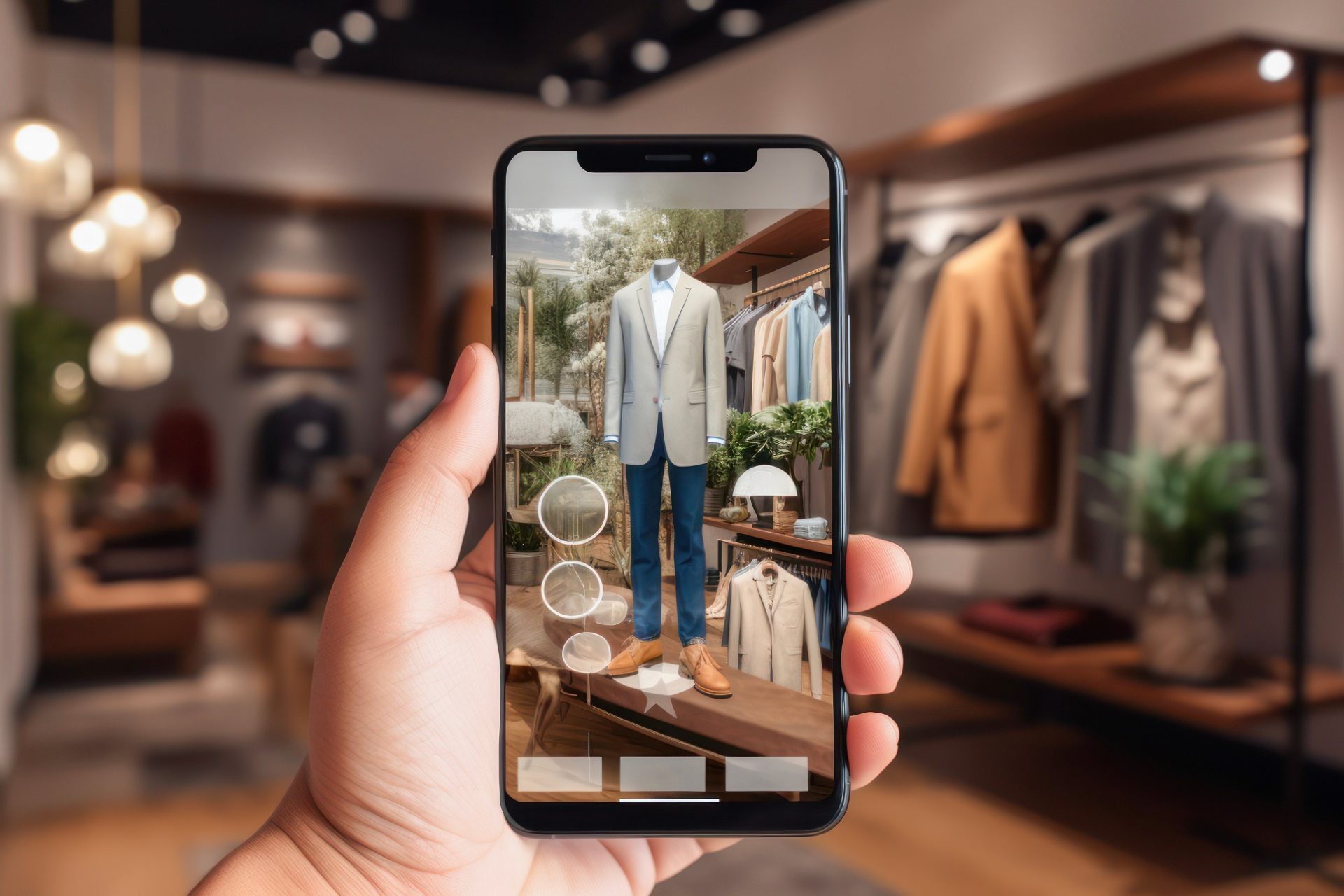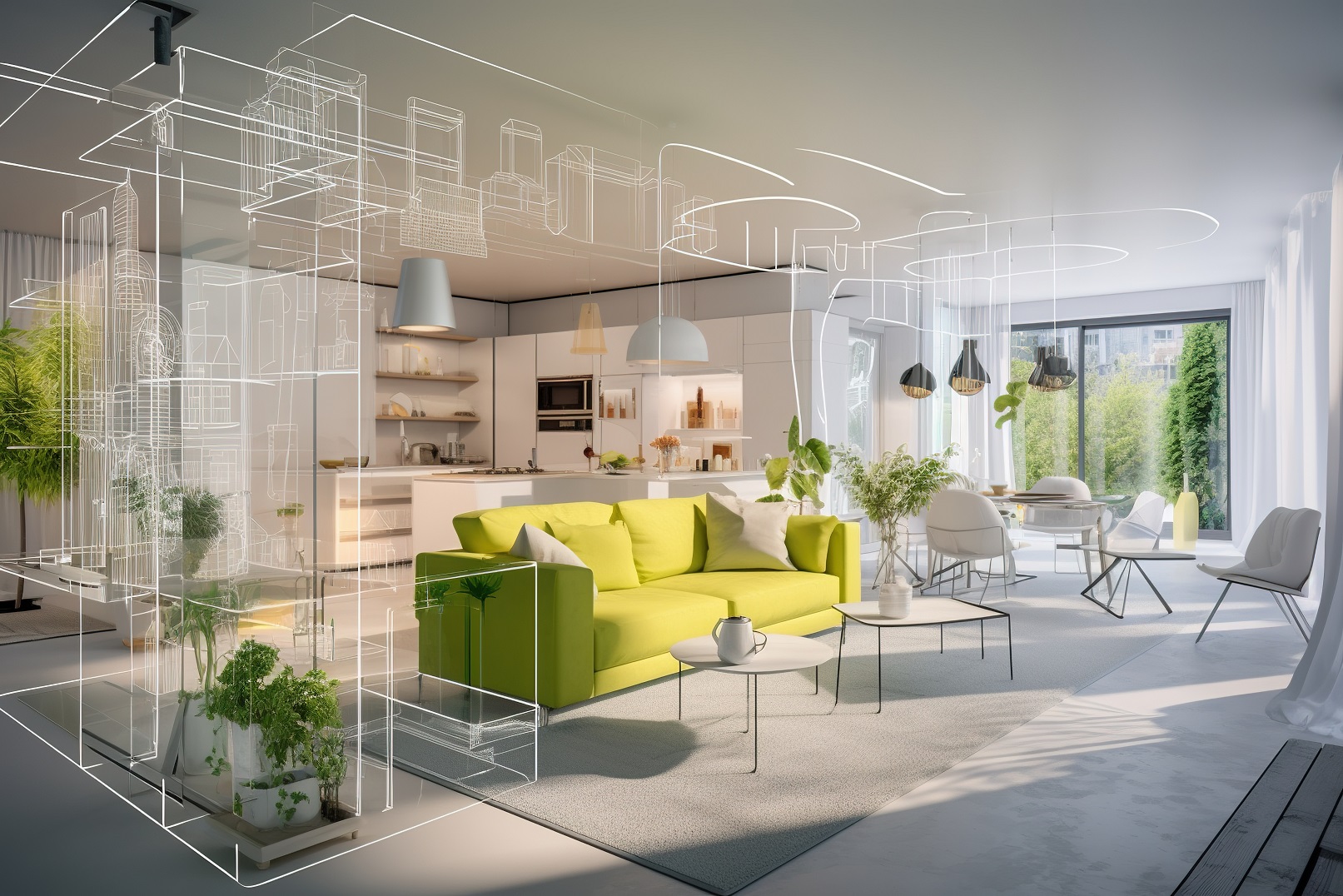Virtual showrooms are changing the way we do business. More and more consumers prefer buying goods online rather than venturing into stores, but sometimes an inability to browse takes away from the experience of shopping – leading to less sales. Now in comes virtual showrooms, offering your customers the chance to peruse products and get the feeling of shopping without having to leave their homes.
In this blog, we’ll uncover everything you need to know about virtual showrooms, the benefits of virtual showrooms, and how you can build a virtual showroom for your business.
What is a Virtual Showroom?
A virtual showroom is an interactive experience of your existing products and available brands. Virtual showrooms can either be 360° images of your existing showroom, or they can replace your showroom altogether, opting for an online-only experience. Virtual showrooms allow customers to “walk” through the showroom, browsing different products or services that are displayed using 3D models, images, videos, or renders. Product descriptions, use cases, and even testimonials can be added to your virtual product displaces.
Virtual showrooms offer customers an immersive shopping experience that not only provides them with the feeling of window shopping in person, but the added explanations of products and descriptions can make shopping with your company more accessible and effective. Virtual showrooms can be purely a display, or they can have interactive elements like videos, quizzes, and even e-commerce aspects!

How Do Virtual Showrooms Work?
Virtual showrooms work by using a variety of 360° images, panoramas, 3D models, videos, and other images to create a cohesive environment. The beauty of virtual showrooms is they are so customizable – they can be adapted for any industry, product offering, and service!
Virtual showrooms are hosted on your website or another online platform that allows potential customers to walk through the showroom from the comfort of their own home. Everything you deem relevant can be added to your virtual showroom. In the development of your virtual showroom, you will provide images and 3D renders of your products, information and pricing, and contact information. The virtual showroom will be laid out to allow customers to ‘walk’ from product to product like any other showroom, and they can click on products that interest them to learn more.
Virtual showrooms work like a combination between an e-commerce website and a store – that’s what makes them so effective! With a website, you don’t get the experience of shopping around and it’s often difficult to get back to where you started, and with stores many customers find they are more time-consuming and less efficient than online shopping. With a virtual showroom, you’ll provide your customers with a tool that lets them have their cake and eat it too!
What are the Benefits of a Virtual Showroom?
In today’s digital age, businesses are continually seeking innovative ways to engage with their customers and enhance their overall shopping experience. Virtual showrooms are digital platforms that offer a range of benefits for both businesses and consumers alike. Here are some of the primary advantages of a virtual showroom.
1. Convenience
One of the most significant advantages of a virtual showroom is convenience. Customers can explore products from the comfort of their homes, eliminating the need for travel, parking, or waiting in long lines. This accessibility allows businesses to cater to a global audience and expand their market reach.
2. 24/7 Accessibility
Unlike physical showrooms with limited operating hours, virtual showrooms are available 24/7. This round-the-clock accessibility accommodates customers from different time zones and varying schedules, making it easier for them to browse and make purchases at their convenience.
3. Reduced Overhead Costs
Maintaining a physical showroom involves substantial overhead costs, including rent, utilities, and maintenance. Virtual showrooms significantly reduce these expenses and allow businesses to allocate resources to other critical areas such as product development and digital marketing.
4. Customization
Virtual showrooms can be customized to fit your brand, target audience, and business needs. You can create immersive and interactive environments that showcase your products in a way that mirrors the in-person experience.
5. Enhanced Product Presentation
Virtual showrooms excel in presenting products in a visually appealing and informative manner. Through high-resolution images, 360-degree product views, and detailed product descriptions, customers can gain a comprehensive understanding of the items they’re interested in arguably better than viewing it in person. This level of detail aids in informed decision-making and can promote more sales.

6. Reduced Physical Constraints
Commercial property can be extremely expensive, which can result in only a fraction of a company’s product range being displayed in physical showrooms. Virtual showrooms, on the other hand, allow your business to show customers a vast catalogue without any space issues.
7. Data Collection and Analysis
Virtual showrooms provide valuable insights into customer behaviour and preferences. By tracking user interactions and collecting data on what products are viewed, how long customers spend in the showroom, and more, businesses can refine their marketing strategies and product offerings. Virtual showrooms can also be integrated with Google Analytics and Facebook Advertising, allowing you to retarget customers with your marketing efforts.
8. Cost-Effective Marketing
Virtual showrooms serve as a cost-effective marketing tool because they’re so adaptable. You can constantly update your virtual showroom with new products, unlike brochures that need to be redesigned and reprinted every time something changes.
9. Reduced Environmental Impact
Operating a physical showroom often involves significant energy consumption, transportation, and waste generation. Virtual showrooms are inherently more environmentally friendly, contributing to a company’s sustainability efforts.
10. Improved Accessibility for Diverse Audiences
Virtual showrooms can be designed to accommodate various accessibility needs such as visual impairment or mobility impairment. This ensures that people living with disabilities have an equal opportunity to explore and engage with your business and products.
11. Dynamic Updates
Virtual showrooms allow for real-time updates. Businesses can swiftly add new products, change pricing, or update information to help keep your customers informed and engaged.
Virtual showrooms offer a multitude of benefits that cater to the evolving needs of today’s consumers and businesses. They provide convenience, cost savings, customization, and valuable data insights while contributing to environmental sustainability. As technology continues to advance, virtual showrooms are likely to become an integral component of modern retail strategies.

Do Virtual Showrooms Make Sales?
Virtual reality has revolutionized the sales landscape, offering a powerful tool for businesses to engage with customers and drive sales. Virtual showrooms can be designed to have an e-commerce presence, allowing customers who are exploring your products to make purchases directly within the virtual showroom.
VR allows businesses to create immersive product demonstrations that provide customers with a lifelike experience of their offerings. Whether it’s showcasing real estate properties, vehicles, or complex machinery, VR enables potential buyers to explore and interact with products as if they were physically present. This heightened sense of immersion fosters a deeper understanding and connection with the product, ultimately increasing the likelihood of a purchase.
Virtual showrooms also recreate the ambiance of a physical retail store in a digital space. Customers can browse through virtual aisles, examine products, and even try them out virtually. This not only enhances the shopping experience but also eliminates geographical barriers, allowing businesses to reach a global audience. In a virtual showroom, customers can engage with the brand, receive personalized recommendations, and make purchases seamlessly.
All in all, virtual showrooms can lead to increased customer engagement, improved product understanding, and more sales!
How to Build a Virtual Showroom?
Does this blog make you want a virtual showroom of your own? We can help! Our team offers virtual tour creation which includes the design and creation of virtual showrooms.
1. Create of the Virtual Environment:
- The process begins with the creation of a digital 3D environment. This can be done using various software tools and technologies, including computer-aided design (CAD) software, 3D modelling, and virtual reality (VR) development platforms.
2. Product Modeling and Integration:
- Detailed product information, such as images, 3D models, descriptions, pricing, and specifications, is integrated into the virtual environment.
3. User Interface (UI) Development:
- The virtual showroom is equipped with a user-friendly interface. Users typically access the showroom through a website, VR headset, or a dedicated app.
4. Visual and Audio Elements:
- Virtual showrooms prioritize high-quality visuals and audio to create an immersive experience.
- 3D rendering techniques ensure that products look realistic and appealing. Background music or sound effects may be included to enhance the atmosphere.
5. Integration with E-Commerce:
- Many virtual showrooms are integrated with e-commerce platforms. This allows users to make purchases directly from the virtual environment.
- Users can add items to their virtual shopping cart and proceed to checkout seamlessly.
6. Analytics and User Data Collection:
- Virtual showrooms often collect data on user interactions. This includes information on which products users are interested in, how long they spend in the showroom, and their navigation paths.
- Analytics provide valuable insights for businesses, enabling them to tailor their offerings and marketing strategies.
7. Accessibility:
- Virtual showrooms can be accessed through various devices, including desktop computers, laptops, smartphones, and VR headsets. This ensures a broad reach to different types of users.
- We can add accessibility widgets to provide speech-to-text, visibility assistance, and more.
8. Marketing and Promotion:
- To attract users to the virtual showroom, we can employ various marketing strategies such as social media campaigns, email marketing, and website promotion.
Let BubbleUP Build Your Virtual Showroom
BubbleUP Marketing can bring your showroom and sales process to the digital landscape! Let our team work with you to design a virtual showroom that is designed for your target audience, showcases your business and brand, and makes more sales!


